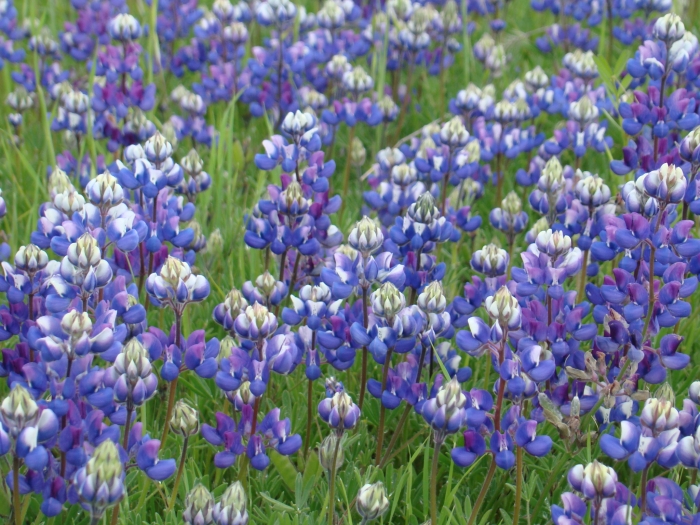Sky Lupine
(Lupinus nanus)
Sky Lupine (Lupinus nanus)
/
/

moranat
Public Domain
Image By:
moranat
Recorded By:
Copyright:
Public Domain
Copyright Notice:
Photo by: moranat | License Type: Public Domain | License URL: http://creativecommons.org/publicdomain/zero/1.0/ | Rights Holder: moranat | Publisher: iNaturalist | Date Created: 2016-04-14T13:56:52-07:00 |
















































































Estimated Native Range
Summary
Lupinus nanus, commonly known as Sky Lupine, is an annual herb native to the grasslands and open woodlands of California and Oregon. It typically grows 6 to 20 inches (15 to 51 cm) tall and is known for its striking blue flowers, which often have white or yellow spots. The flowers are arranged in dense, whorled spikes and bloom from March to May, adding a splash of color to the spring landscape. Sky Lupine’s foliage is palmately compound, with leaves divided into several narrow leaflets.
Sky Lupine is valued for its ability to fix nitrogen in the soil, making it beneficial for soil health and an excellent choice for restoration projects and wildflower gardens. It is also a popular choice for naturalistic plantings and meadow gardens due to its ease of maintenance and drought tolerance. In cultivation, it thrives in full sun and requires well-drained soils, preferably sandy or loamy. While it is drought-tolerant, moderate watering can encourage a more prolonged flowering period. Sky Lupine is also a host plant for several butterfly species, including the endangered Mission Blue Butterfly, providing an ecological benefit. However, it can be susceptible to fungal diseases, especially in humid conditions or when overwatered.CC BY-SA 4.0
Sky Lupine is valued for its ability to fix nitrogen in the soil, making it beneficial for soil health and an excellent choice for restoration projects and wildflower gardens. It is also a popular choice for naturalistic plantings and meadow gardens due to its ease of maintenance and drought tolerance. In cultivation, it thrives in full sun and requires well-drained soils, preferably sandy or loamy. While it is drought-tolerant, moderate watering can encourage a more prolonged flowering period. Sky Lupine is also a host plant for several butterfly species, including the endangered Mission Blue Butterfly, providing an ecological benefit. However, it can be susceptible to fungal diseases, especially in humid conditions or when overwatered.CC BY-SA 4.0
Plant Description
- Plant Type: Herb
- Height: 0.5-1.5 feet
- Width: 0.333-1 feet
- Growth Rate: Moderate
- Flower Color: Blue, Purple, White
- Flowering Season: Spring, Winter
- Leaf Retention:
Growth Requirements
- Sun: Full Sun
- Water: Medium, High
- Drainage: Fast, Medium
Common Uses
Bank Stabilization, Bee Garden, Bird Garden, Butterfly Garden, Deer Resistant, Drought Tolerant, Fragrant, Hummingbird Garden, Low Maintenance, Rabbit Resistant, Salt Tolerant, Showy Flowers
Natural Habitat
Native to the grasslands and open woodlands of California and Oregon
Other Names
Common Names: Field Lupine , Dwarf Lupin , Ocean-Blue Lupine , Douglas’ Annual Lupine , Orean Blue Lupin , Zwerg-Lupine , Annual Lupine
Scientific Names: Lupinus nanus , Lupinus nanus var. nanus
GBIF Accepted Name: Lupinus nanus Douglas ex Benth.